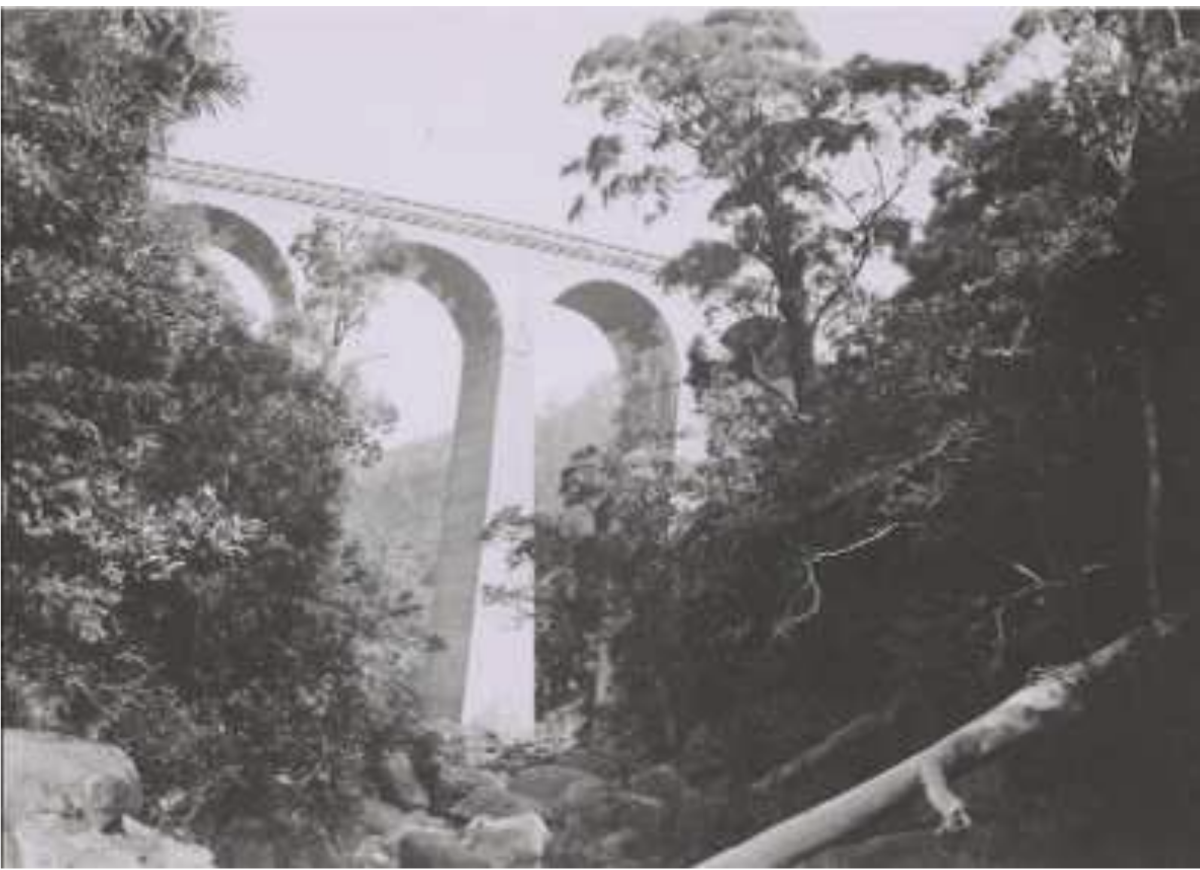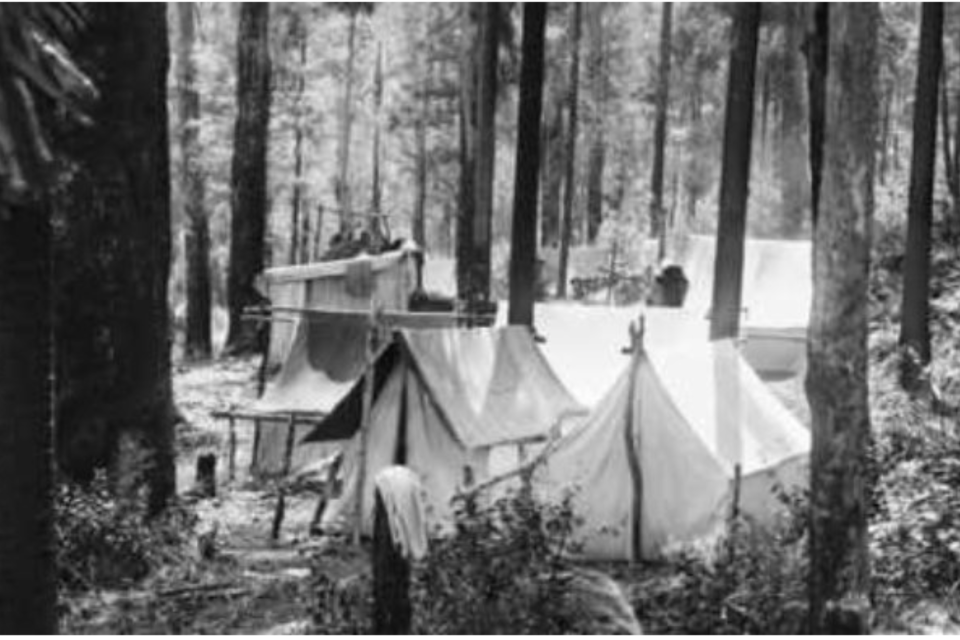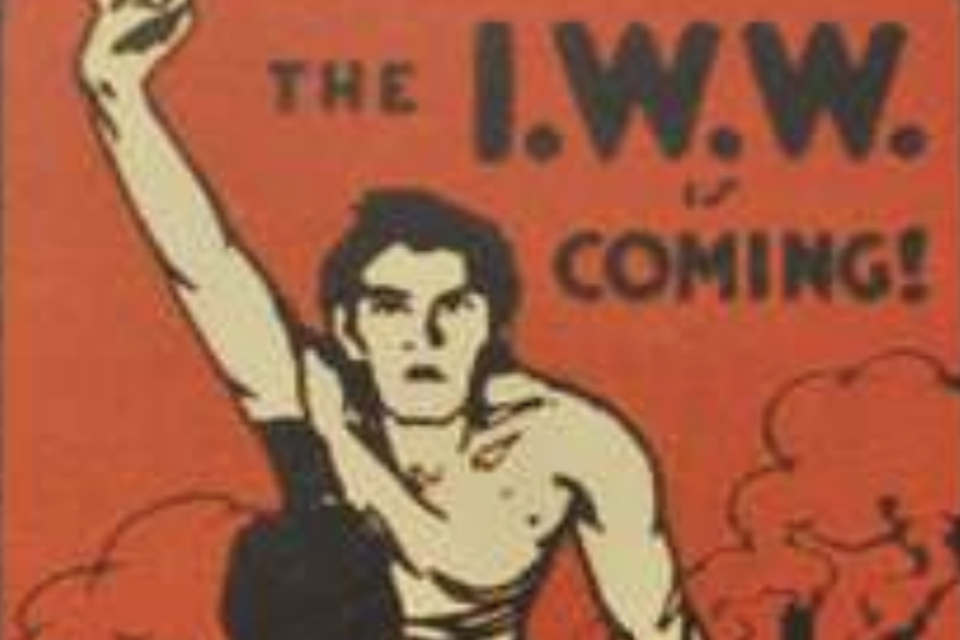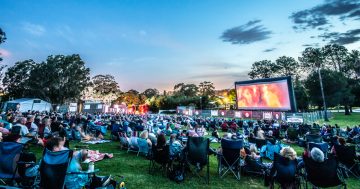
Stanwell Park viaduct … Don Taylor became an activist for workers’ rights while working on its construction in 1919. Photo: Supplied.
Don Taylor’s father died when he was just seven years old. He was one of 10 kids, so times got tough and he left school aged 13 to help support the family and went to work at anything he could find – mostly minding cows.
But after four years a terrible drought during the years 1907-1908 forced the dairies around Adelong to close.
No more work was available and at the remarkable age of 17 Don Taylor returned to school and eventually became a teacher in an unlined shack at a place named Oberne, some 20 km from Tarcutta, NSW.
Don resigned from teaching in 1913 and then got jobs working in railway camps – first working on the freezing Nimmitabel-Bombala line and in 1919 at Stanwell Park.
During the anti-conscription campaigns of World War I and the Great Railway Strike of 1917 in NSW, Don Taylor became more or less a full-time political activist, but one living basically from hand to mouth.
Quite a few people like Don belonged to the Industrial Workers of The World (IWW) who were known as the Wobblies and sought to end capitalist exploitation of workers.
But it was as much the 1919 influenza pandemic rather than politics that first caused Don to become an activist at Stanwell Park in NSW.
What had happened was that after the disastrous collapse of the Great Strike in NSW in late 1917, Don worked during 1918 at a mine in Broken Hill. At the end of the year he made a decision to spend Christmas in Sydney.
He had then intended to go back to Broken Hill by way of Melbourne and Adelaide, but because of the influenza pandemic it was necessary to go into quarantine at both the Victorian and South Australian borders – something which Don described as “an expensive emergency for which I was not prepared”.
My favourite historian, Humphrey McQueen, provides the detail that depending which border crossing was encountered during the 1919 influenza pandemic, people were “required to pay from 7s 6d to 12s 6d for the pleasure of seven days quarantine detention, two injections and thrice daily stints in an inhalation chamber”.
So Don explained that, as an alternative, he went to Stanwell Park where miners were employed in the three tunnels and viaduct that were part of a deviation to eliminate the long tunnel up the steep grade from Stanwell Park to Otford.



Don got a start and worked in the tunnel south of the present Stanwell Park railway station for the remainder of 1919. Living and working conditions, however, were truly awful. There was very poor sanitation and you even had to supply your own tent in which to live.
Influenza was also present in the camp and one of the workers, even though he already had a heavy cold, caught a train to Sydney on his one day off and meant to return that night on the late train.
He didn’t get off the train at Stanwell Park station and was found dead the next morning in a rail carriage at Bomaderry.
But back in Broken Hill a strike had begun that was to last for 19 months and the very conservative Australian Workers Union (AWU) struck a levy of two shillings and sixpence a fortnight in support of the strikers.
The response from Stanwell Park was generous, for there were quite a number in the Stanwell camp who had previously worked in Broken Hill.
When more money than the allotted amount was collected, some – including Don – began to fear the balance would be kept by the AWU instead of being distributed to the wives and kids of the striking unionists who were now on an almost starvation diet.
To ensure confidence in the procedure, Don made a list of the Stanwell Park contributors and then attached a postal receipt ensuring the money would get to the strikers rather than the AWU. His scheme was 100 per cent successful.
Despairing of the conservatism of the AWU, Don became a supporter of the One Big Union Movement (OBU) which aimed to make an injury to one worker, an injury to all.
Recruitment was immediate at Stanwell Park and danger money was won for those working on the big brick viaduct and “bank to bank hours” were secured for the miners in the longest tunnel.
This meant workers were paid from the moment they set out from the rail workers’ camp until they reached their worksite and had returned to camp.
But the radicalism folded once the viaduct and tunnels were completed and the Stanwell Park camp broke up. The AWU then did all it could to crush the OBU idea.
Don Taylor thus finished up at Stanwell Park and returned to school teaching.
By 1955 Don had become president of the NSW Teachers Federation. And when he died in 1988 it was said he “was known to boast that he held tickets in more trade unions than anyone else in NSW”.
Don, however, had probably still hoped he would only ever hold one such union ticket and that was in the One Big Union which aimed to end the exploitation of all workers forever.









